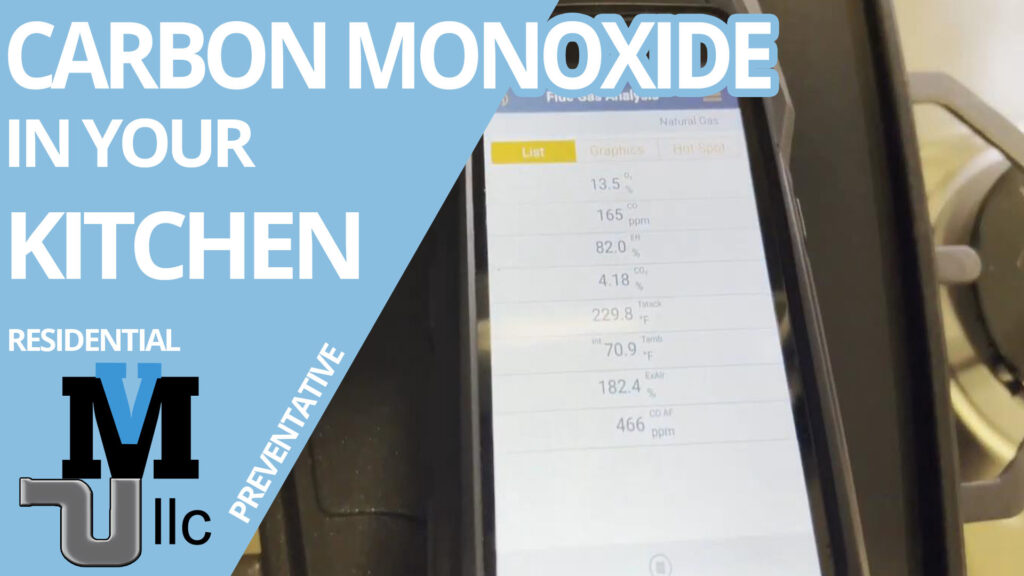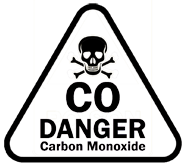Do you know that you could be getting exposed to deadly levels of carbon monoxide poisoning every day and don’t even know it’s affecting you? Are you aware that being regularly exposed to small amounts of CO (carbon monoxide) can cause serious health risks? Here is some important information about the dangers of carbon monoxide poisoning and where it can come from in your home.
Gas kitchen range
The kitchen range is a gas appliance we all use every day and never have a second-guess about it being unsafe. We all assume lighting the oven, baking, and cooking our food is okay because the range is safe to use in the kitchen. Most people never consciously think about when you ignite the oven or burners to cook, it’s combustion. And very few even know it’s releasing CO inside your house.
Would you believe that gas ranges are allowed to emit up to 800 ppm of carbon monoxide? Isn’t that amazing?! Once I tell you about dangerous levels of CO, you’ll realize that is just insane. That’s right, at 800 ppm, you have some severe mechanical life-threatening issues going on with the range.
It’s Not Just Old Stoves & Ovens
It can happen with a brand new gas range right from the big box store. If adjusted wrong at the factory or dirty, old or new, it could release double that 800 ppm from the oven and top burners. For example, baking and, at the same time cooking with one or more top burners could double or triple the lethal carbon monoxide mix.
Is it Turkey or Carbon Monoxide?
The thought of cooking with both oven and the stove top burners at the same time made me think of something. While you might cook on both the stove top and use the oven at the same time for regular meals. It’s usually not for a long time. But the exception would be Thanksgiving.
The typical household has the stove and oven going almost all Thanksgiving day long cooking the feast. We’ve long blamed turkey for making us tired after the meal. But what if that’s not the case? What if it’s low level Carbon Monoxide?
New Doesn’t Always Mean Safe
Just because a brand new gas kitchen range leaves the store doesn’t mean it’s operating within the so-called safe limits. A study on gas ranges revealed that 51 percent raised levels above the EPA requirement of 9 ppm of CO. If your stove is operating with the maximum high level of 800 ppm of CO, you may start being affected in a number of ways within 45 minutes of being exposed:
- Nausea
- dizziness
- Sleepiness
Death can occur after a two-hour exposure to 800 ppm of carbon monoxide. Now say your range is only emitting low levels of CO every time you use it. The effects are still unhealthy. Here are a few videos showing gas ranges emitting high levels of CO. The first one is from a job I was on:
What else can emit CO?
Other CO sources that you should be aware of that can emit low or high levels of carbon monoxide are any of the below:
- Clothes dryer
- Water heaters (tankless or tank)
- Furnaces and boilers
- Fire places (both gas and wood burning)
- gas stoves and ovens
- Motor vehicles
- Gas grills generators
- Lawn equipment
- Wood stoves
- Swimming pool boilers
- Tobacco smoke
- Candles
If you have any gas appliances in your home, they need annual inspections to verify they are working safely. That is the first thing to remember. The second is never to start your car or lawn equipment inside your home. Excess tobacco smoke can cause levels of CO too. If you smoke, open a window, get an air filter, or smoke outside. By doing this, you’ll eliminate the risk of building up carbon monoxide.
Low levels vs high levels
So now you know high levels of Co can be deadly now, right? But continued exposure to low-level carbon monoxide above 15 ppm is just as hazardous as the high levels and something to avoid just the same. After the long term, ongoing exposure to CO can cause illness and permanent disabilities.
Most people don’t even realize it is CO that is actually causing their symptoms. Many shrug it off as the flu. And recently, a family mistook Carbon Monoxide poisoning for covid. But thankfully they caught it in time.
Do you know how high your CO Levels are?
You may not be experiencing symptoms yet. But that shouldn’t stop you from making sure your home is safe from Carbon Monoxide. Schedule with Vince do a Whole Home CO Safety Check.


